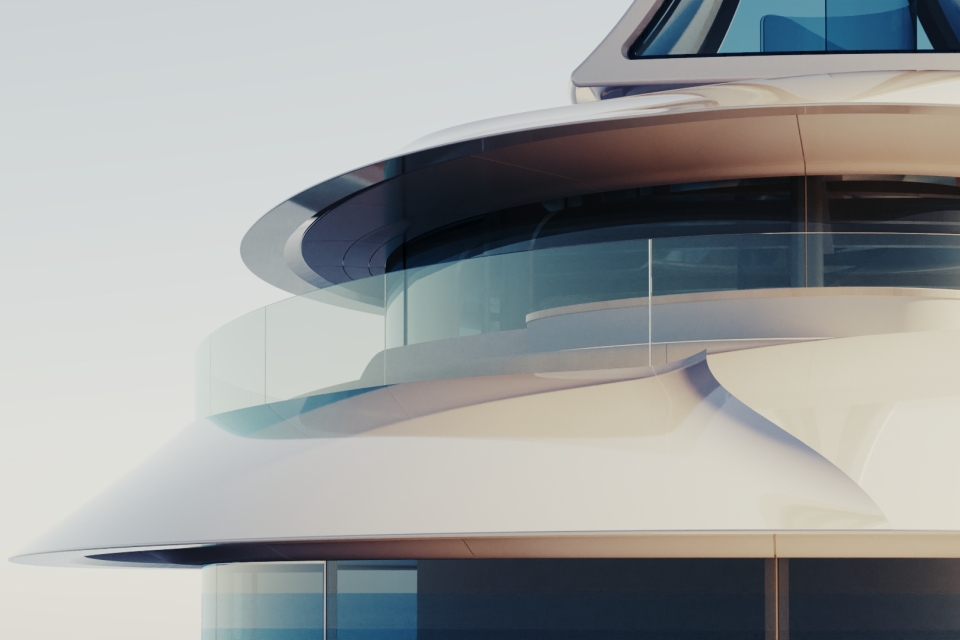The 2023 Monaco Yacht Show features the debut of Feadship’s latest Concept Design Dunes. This concept showcases how intelligent exterior design can significantly – and passively – reduce a superyacht’s energy needs, and at the same time capture wind and solar energy almost invisibly.
The flowing lines from Studio De Voogt reflect the concept’s namesake, dunes, but with a mast and different stern shapes. It’s what can’t be seen, however, that sets this concept at the forefront of sustainability.
Feadship began presenting concept designs in 2006 to drive research and design discussion with deep dives into the likely expectations of the next generation of Feadship owners based on client feedback, long brainstorming sessions, and in-depth technology research.
Also read: Feadship reveals fuel cell solution for sustainable yachting
Towards net-zero superyachts
Dunes is the twelfth concept design and it takes a big leap toward Feadship’s goal of net-zero superyachts. Sustainable features include large overhangs that shade windows and reduce cooling requirements, storage batteries, no teak decks, fuel cell technology and a radical propulsor.
Together, these will result in a yacht calculated to eliminate up to 95 per cent of negative environmental impact factors, as ranked on the Yacht Environmental Transparency Index (YETI), compared to a yacht designed to minimum mandatory environmental regulations.
Also read: How Feadship plans to power yachts ready for future fuels
Low impact metals and green methanol
Unlike many futuristic renderings, Feadship Concept Designs are buildable. An owner could begin design discussions tomorrow. Speaking of construction, Feadship is making a quantum sustainability leap at the beginning of the process by shifting to “low impact” steel hull and aluminium/wood superstructure. These metals can be produced with fifty to seventy per cent fewer CO2 emissions, and wood is a CO2-negative material.
Dunes features a breakthrough, high efficiency electric propulsion system from ABB called Dynafin unveiled last May. Onboard electrical power will be generated from equally revolutionary solid oxide fuel cells that use green methanol as a reaction agent.
Also read: VIDEO: ABB reveals propulsion concept that mimics whale tail
Hidden command centre
Studio De Voogt was inspired by the shapes sculpted by the forces of nature; drifting snow, water and sand. Noticing how sand dunes are timeless, yet ever changing gave the designers new ideas about line, flow and adaptability. Dunes is a backdrop for the onboard lifestyle today’s owners desire with adaptable, multi-purpose spaces, views, and a mix of open-plan areas and cosy, intimate spaces.
Without the obstacle of a central engine room, six guest staterooms are placed in proximity to spaces where guests will spend most of their time such as the pool deck, dining, and spa areas. Without a bridge taking the best views of the superstructure – there is a hidden command centre as was also used on the yacht concept Pure – the owner has a private deck and guests have the Pavilion deck.
Walk-around decks are a main feature of the design and offer alternate circulation routes around the yacht as well as pop-up seating and entertaining areas plus two small pools and a recessed bow seating in addition to the main one aft. The topsides have teak-free decks made of millions of tiny glass or stone chips sealed in a transparent aliphatic polyurethane resin.
Also read: Feadship unveils methanol-powered yacht concept Slice with glass strip from bow to stern








